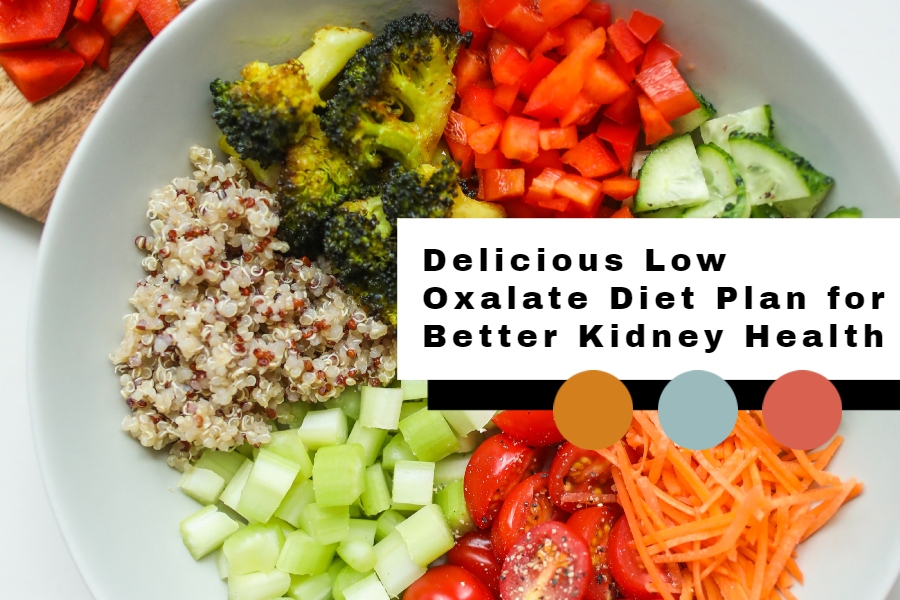Prevent Pain Due to Kidney Stones: If you have been diagnosed with certain kidney conditions or are at risk of developing kidney stones, your healthcare provider may recommend following a low-oxalate diet plan. Oxalates are naturally occurring substances found in many foods, including fruits, vegetables, and grains, and they can lead to the formation of kidney stones.
A low-oxalate diet plan can help reduce the risk of developing kidney stones and promote better kidney health.
The Benefits of Following a Low Oxalate Diet to Avoid / Reduce Pain Due To Kidney Stones
To conclude, a low-oxalate diet plan can offer numerous health benefits, particularly for individuals susceptible to kidney stones or other oxalate-related conditions. By decreasing the intake of high-oxalate foods and integrating nutrient-rich alternatives, this diet plan can facilitate healthy digestion, foster robust bones, and reduce the chances of chronic diseases.
Implementing the proposed meal plan and suggestions can initiate your endeavor toward a healthier lifestyle. With commitment and regularity, you can immediately experience the advantages of a low-oxalate diet plan.
Delicious Low Oxalate Diet Plan to Reduce Pain Due To Kidney Stones
We have created a 7-day low-oxalate diet plan that includes delicious and nutritious breakfast, lunch, and dinner to get you started. Each day is carefully planned to ensure you receive a balanced diet with the appropriate number of calories to support your health goals.
Check out our suggested meals for Days 1-7.
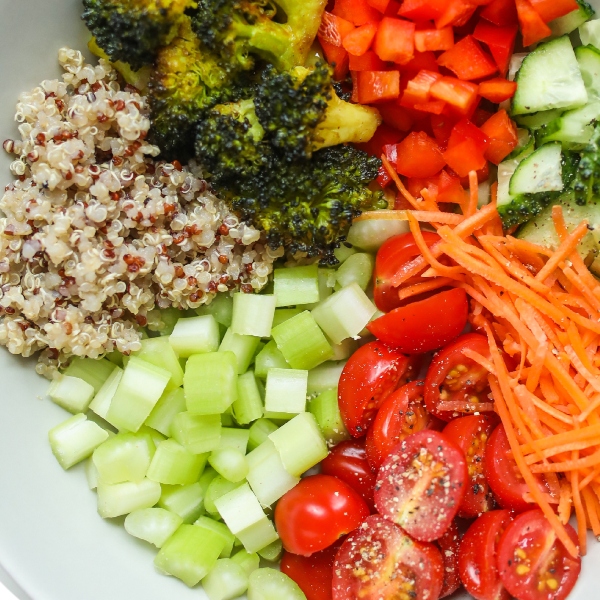
Breakfast:
- Oatmeal with almond milk, sliced banana, and chia seeds (approx. 350 calories)
- Black coffee
Lunch:
- Grilled chicken breast with roasted vegetables (broccoli, red peppers, and carrots) (approx. 400 calories)
- Quinoa salad with mixed greens, cucumber, and sunflower seeds (approx. 250 calories)
- Water
Dinner:
- Grilled salmon with asparagus and sweet potato (approx. 500 calories)
- Mixed green salad with low-sodium vinaigrette (approx. 50 calories)
- Water

Breakfast:
- Scrambled eggs with low-sodium ham and mushrooms (approx. 350 calories)
- Whole grain toast with low-sodium margarine
- Grapefruit juice
Lunch:
- Tuna salad (made with low-sodium canned tuna) on a bed of mixed greens (approx. 300 calories)
- Whole grain crackers with Mixed green salad with low-sodium vinaigrette
- Water
Dinner:
- Grilled salmon with roasted cauliflower and brown rice (approx. 500 calories)
- Mixed green salad with low-sodium vinaigrette (approx. 50 calories)
- Water

Breakfast:
- Spinach and feta omelet: 300 calories
- Whole grain toast with low-sodium margarine: 100 calories
- Grapefruit juice: 70 calories Total: 470 calories
Lunch:
- Lentil soup with mixed vegetables (carrots, celery, and zucchini): 250 calories
- Whole grain crackers: 120 calories
- Water: 0 calories Total: 370 calories
Dinner:
- Grilled salmon with roasted broccoli and sweet potato: 500 calories
- Mixed green salad with low-sodium vinaigrette: 50 calories
- Water: 0 calories Total: 550 calories
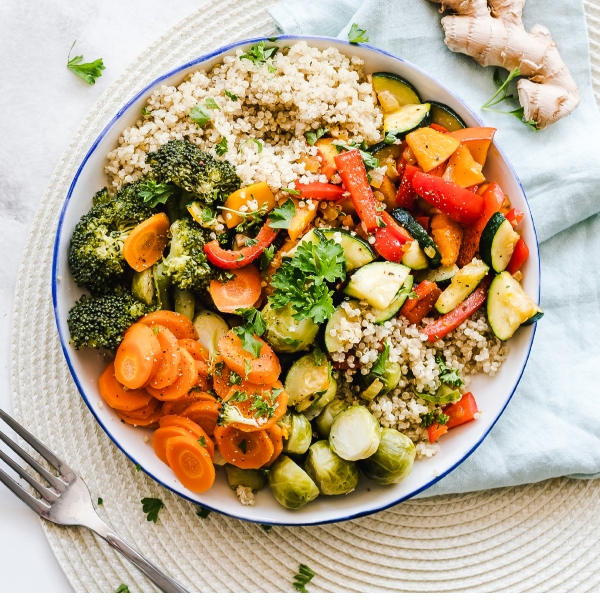
Breakfast:
- Greek yogurt with mixed berries and low-sugar granola (approx. 300 calories)
- Green tea
Lunch:
- Turkey and avocado sandwich on low-sodium whole wheat bread (approx. 400 calories)
- Vegetable soup (low-sodium broth with carrots, celery, and kale) (approx. 100 calories)
- Water
Dinner:
- Pork loin with green beans and brown rice (approx. 500 calories)
- Mixed green salad with low-sodium vinaigrette (approx. 50 calories)
- Water

Breakfast:
- Greek yogurt with mixed berries and low-sugar granola (approx. 300 calories)
- Vegetables
- Green tea or Black coffee and Water
Lunch:
- Grilled chicken breast with mixed vegetables (carrots, celery, and zucchini) (approx. 400 calories)
- Quinoa salad with mixed greens and sunflower seeds (approx. 250 calories)
- Water
Dinner:
- Pork loin with roasted Brussels sprouts and sweet potato (approx. 500 calories)
- Mixed green salad with low-sodium vinaigrette (approx. 50 calories)
- Water
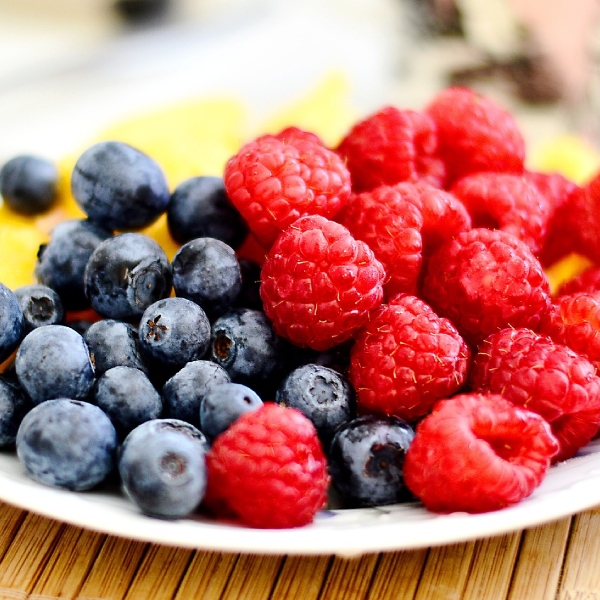
Greek yogurt with fresh berries
- 1/2 cup of plain, non-fat Greek yogurt: 60 calories
- 1/2 cup of mixed fresh berries ( strawberries and blueberries): 40 calories
- Total: 100 calories
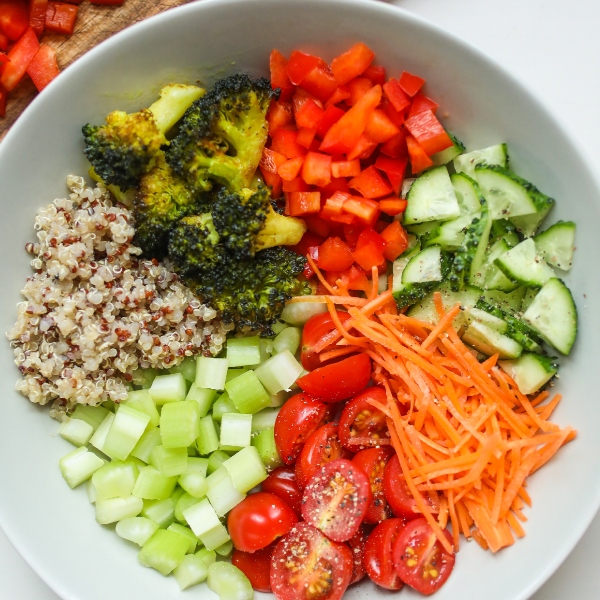
Breakfast:
- Spinach and feta omelet (approx. 400 calories)
- Whole grain toast with low-sodium margarine
- Orange juice
Lunch:
- Lentil soup with mixed vegetables (carrots, celery, and zucchini) (approx. 200 calories)
- Whole grain crackers
- Water
Dinner:
- Grilled chicken breast with roasted Brussels sprouts (approx. 500 calories)
- Mixed green salad with low-sodium vinaigrette (approx. 50 calories)
- Water

Breakfast:
- Omelet with low-sodium ham, cheese, and mixed vegetables (approx. 400 calories)
- Whole grain toast with low-sodium margarine
- Orange juice
Lunch:
- Turkey and avocado sandwich on low-sodium whole wheat bread (approx. 400 calories)
- Carrot and celery sticks with low-sodium hummus (approx. 150 calories)
- Water
Dinner:
- Grilled chicken breast with roasted asparagus and brown rice (approx. 500 calories)
- Mixed green salad with low-sodium vinaigrette (approx. 50 calories)
- Water
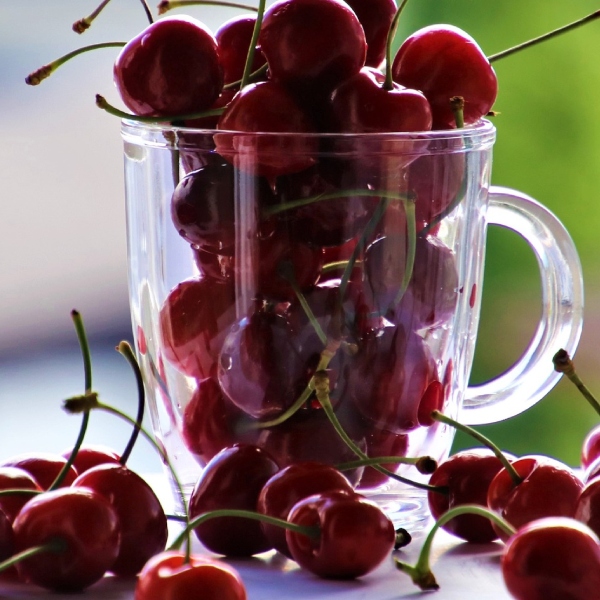
Fresh fruit salad with cottage cheese
- 1/2 cup of mixed fresh fruit (berries): 40 calories
- 1/4 cup of low-fat cottage cheese or another low fat: 40 calories
- Total: 80 calories
Nutrition For Healthy Kidneys – Oxalate Content Of Common Foods
| Food Item | Category | Calories (per serving) | Oxalate Level (mg) |
|---|---|---|---|
| Brown Rice | Grain | 215 | 6 |
| Apples | Fruit | 95 | 1 |
| Bananas | Fruit | 105 | 3 |
| Blueberries | Fruit | 84 | 4 |
| Grapes | Fruit | 62 | 5 |
| Melons | Fruit | 46 | 2 |
| Peaches | Fruit | 59 | 4 |
| Pears | Fruit | 101 | 5 |
| Plums | Fruit | 30 | 4 |
| Strawberries | Fruit | 49 | 2 |
| Asparagus | Vegetable | 27 | 3 |
| Broccoli | Vegetable | 55 | 2 |
| Cabbage | Vegetable | 22 | 1 |
| Carrots | Vegetable | 52 | 4 |
| Cauliflower | Vegetable | 25 | 2 |
| Cucumber | Vegetable | 16 | 2 |
| Eggplant | Vegetable | 20 | 5 |
| Garlic | Vegetable | 5 | 1 |
| Green Beans | Vegetable | 31 | 3 |
| Lettuce | Vegetable | 15 | 1 |
| Mushrooms | Vegetable | 15 | 2 |
| Onions | Vegetable | 40 | 3 |
| Peppers | Vegetable | 30 | 2 |
| Potatoes | Vegetable | 130 | 5 |
| Zucchini | Vegetable | 17 | 2 |
| Lean Meats | Protein | 150 | 0 |
| Poultry | Protein | 165 | 0 |
| Fish | Protein | 145 | 0 |
| Eggs | Protein | 70 | 0 |
| Low-Fat Dairy | Dairy | 90 | 1 |
| White Rice | Grain | 205 | 1 |
| Corn | Grain | 96 | 4 |
| Millet | Grain | 207 | 2 |
| Quinoa | Grain | 222 | 5 |
Recommendations to Reduce Pain Due To Kidney Stones
- Stick to low-oxalate fruits and vegetables (under 10 mg per serving).
- Drink plenty of water to help flush oxalates from the body.
- Pair high-calcium foods with oxalate-containing foods to reduce oxalate absorption.
- Limit high-oxalate foods such as spinach, beets, and nuts.
Source & Credits:
Low Oxalate Diets for Kidney Stone Treatment and Management
The Best Diet Plan For Weight Loss Is One That Works For You
Low Carb Diet Vs Keto Diet: Which One Should I Follow?
https://sites.google.com/dg2market.com/a-holistic-approach/low-oxalate-diet-to-avoid-kidney-stones
https://sites.google.com/site/pracktiko/mango-low-oxalate-diet
